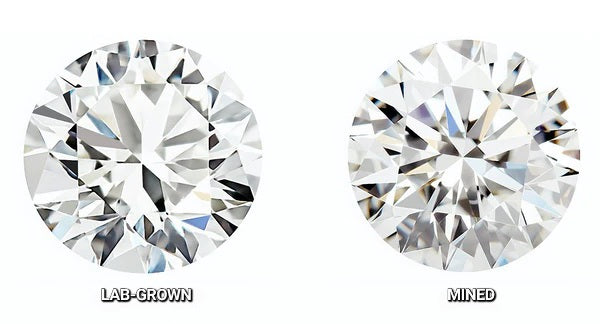
Lab-Grown Diamonds
Share
What are Lab-grown diamonds?
-
Lab-Grown Diamonds: Lab-grown diamonds are diamonds that are created in a laboratory rather than being mined from the Earth. They have the same chemical composition, molecular structure, and physical properties as mined diamonds.
- Real Diamonds: Lab-grown diamonds are considered real diamonds because they share the same chemical and physical properties as mined diamonds. They are not diamond simulants or imitations.
- Formation: Mined diamonds are formed deep within the Earth's mantle through natural processes involving extreme heat and pressure. Lab-grown diamonds are created using advanced technology to replicate these conditions.
-
HPHT (High Pressure-High Temperature): In this method, a small diamond seed is placed in carbon and subjected to high pressure (103-500 bar) and high temperature (over 1480 degrees Celsius). The carbon melts, and a new diamond forms around the seed.
-
CVD (Chemical Vapour Deposition): CVD uses a diamond seed from a mined diamond, placed in a chamber filled with carbon-rich gasses (methane and hydrogen). These gasses are ionized into plasma using technology like microwaves or lasers, and carbon begins to bond to the diamond seed, forming a new diamond.
- Detecting Differences: While lab-grown diamonds are nearly identical to mined diamonds in terms of their chemical and physical properties, there are subtle differences that can be detected using specialized equipment by qualified gemmologists. CVD Type IIA diamonds are particularly challenging to distinguish from mined diamonds even for experts. HPHT diamonds may have metallic inclusions, making them slightly easier to identify.
In summary, lab-grown diamonds are genuine diamonds that are created using advanced technology to replicate the natural processes that form mined diamonds. They are virtually indistinguishable from mined diamonds to the naked eye and require specialized equipment and expertise for differentiation.